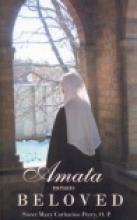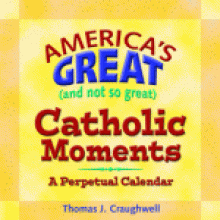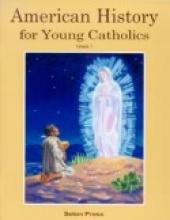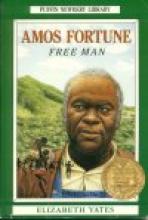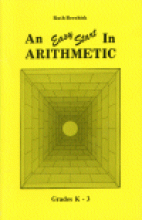No name
Alvin's Secret Code
Subject(s):
Grade / Age level:
Review:
Reviewed by:
First reviewed:
5-11-06
Amata Means Beloved
Subject(s):
Grade / Age level:
Review:
Sister has given us a beautiful look behind the closed doors of a cloistered convent in this little gem set in post 9-11 America. It is the story of a young woman who feels called to religious life but struggles to understand God's workings. This woman had been discerning her vocation to religious life when her life is shattered by the death of her brother, a seminarian, who is killed by terrorists. She has been unable to get over the loss of this beloved brother and although she wants to, cannot forgive the men that killed him.
She enters the convent as planned and the struggle to come to terms with her grief blends with her journey to find her place in the community of sisters. Her superior gives her the religious name of Amata because she wants the woman to know that she is beloved of God.
When the convent is gifted with a really fine bell, the rest of the monastery rejoices. Sister Amata, however, reveals that her brother had been the bell ringer at the seminary and she hates the idea of hearing the bells ring at the convent. However, not only must she hear the bells and be reminded of the pain of losing her brother, the novice mistress assigns her the job of actually ringing the Angelus bell. As she conquers her fear of the bell, she finally accepts God's will and the death of her brother, and is able to forgive his killers. This is stated so simply here, but Sister Catharine's writing is very moving. I cried through the whole last half of the book. She captures the movement of the heart as it leaves itself and the world and turns to God.
While the story of the young woman's conversion is lovely, one of the best things about this book is the view of religious life. The nuns order pizza or ice cream on special occasions, have talent shows, and work with sheep. Their conversations over the cleaning of the wool are joyful and witty. One of the nuns even translates documents for the Holy Father.
Sister Mary Catharine distributes this book to young women who might be interested in a religious vocation to give them a perspective on the life. However, this would be a good book for a high school girl to read whether she is considering a vocation or not.
She enters the convent as planned and the struggle to come to terms with her grief blends with her journey to find her place in the community of sisters. Her superior gives her the religious name of Amata because she wants the woman to know that she is beloved of God.
When the convent is gifted with a really fine bell, the rest of the monastery rejoices. Sister Amata, however, reveals that her brother had been the bell ringer at the seminary and she hates the idea of hearing the bells ring at the convent. However, not only must she hear the bells and be reminded of the pain of losing her brother, the novice mistress assigns her the job of actually ringing the Angelus bell. As she conquers her fear of the bell, she finally accepts God's will and the death of her brother, and is able to forgive his killers. This is stated so simply here, but Sister Catharine's writing is very moving. I cried through the whole last half of the book. She captures the movement of the heart as it leaves itself and the world and turns to God.
While the story of the young woman's conversion is lovely, one of the best things about this book is the view of religious life. The nuns order pizza or ice cream on special occasions, have talent shows, and work with sheep. Their conversations over the cleaning of the wool are joyful and witty. One of the nuns even translates documents for the Holy Father.
Sister Mary Catharine distributes this book to young women who might be interested in a religious vocation to give them a perspective on the life. However, this would be a good book for a high school girl to read whether she is considering a vocation or not.
Perspective:
Catholic
Reviewed by:
First reviewed:
4-29-04
America's Great (and not so great) Catholic Moments: A Perpetual Calendar
Subject(s):
Setting:
Grade / Age level:
Resource Type:
Review:
This interesting, informative and often light-hearted perpetual calendar offers an event from Catholic history that took place on each date of the year. A brief paragraph explains the event (highlighting many great Catholics people and events from American History) with a "For More Information" bar offering the source of the information (and further reading). Without whitewashing all Catholics as noble (did you know that Dred Scott and the Supreme Court justice giving the majority opinion were both Catholics?), this calendar gives a glimpse of Americans in every walk of life - Hollywood, Sports, Politics - and introduces us to exemplary figures like the nuns who nursed soldiers from the North and South during the Civil War.
This would make a fun family project to share at meal-time and might lead to further "explorations" about particularly interesting entries. It would also make a great gift for a college student, history buff or homeschool parent.
This would make a fun family project to share at meal-time and might lead to further "explorations" about particularly interesting entries. It would also make a great gift for a college student, history buff or homeschool parent.
Perspective:
Catholic
Additional notes:
Binding details: desk-calendar sized stand)
Reviewed by:
First reviewed:
10-17-05
American History for Young Catholics, Grade 1
Subject(s):
Setting:
Grade / Age level:
Resource Type:
Review:
American History for Young Catholics includes 18 short stories, offering a gentle introduction to American History. Not longer than two pages each, each interesting selection takes less than five minutes to read aloud. The stories include famous American heroes; such as George Washington and Daniel Boone; American Saints, such as Kateri Tekawitha and St. Frances Cabrini; and interesting facts about American history, such as famous inventions and the Panama Canal. The selections are short, but substantive. Despite the large print and short length, the reading level is probably too difficult for many first graders, but they would work well as a read-aloud. For independent reading, the book might be more appropriate for an average 8-10 year old. Each story is accompanied by a photograph, drawing, or picture. Some pictures could be photocopied for the student to color while mom is reading aloud.
Perspective:
Catholic
Reviewed by:
First reviewed:
9-3-02
American History, Grade 5
Subject(s):
Setting:
Grade / Age level:
Resource Type:
Review:
There is no shortage of reprinted United States for elementary Catholic students, but this one designed for fifth grade offers a unique perspective. The student's text is an overview of American history from the discovery period through to 1963, with the final chapters on the history of machines and transportation and the Constitution.
The seven units and twenty-eight chapters are fairly brief at an average of ten pages, and the reading level is appropriate for fifth and sixth grade students. In the chapters are loads of black and white illustrations, maps and timelines. The end-of-chapter questions are all discussion and short answer or essay type, with a list of persons, places, and terms that might be useful for a timeline book assignment. In addition, there are some "Interesting Things to Do" that are more research and hands-on oriented. The end-of-unit questions are also discussion or essay type, critical thinking questions. Also included are a section called "Linking Geography to History", more "Interesting Things to Do", and a list of additional books to read. Many of the titles on the book list are familiar to me as they are what is presently being discarded from the library. Many of them are are out-of-print, but others are currently being reprinted in inexpensive paperback editions. If essay questions are more than your student is able to tackle, the corresponding test booklet includes tests in the typical multiple-choice and fill-in-the-blank format.
The Teacher's Manual contains the unique part of this course, and I would recommend its purchase as essential to getting the best out of this course. The reprinted edition is 95 pages long and is comb-bound. Its focus is on Christian social principles, which are outlined as an introduction to the Teacher's Manual and the course. Each unit has introductory information for the teacher, as well as an introduction to each chapter's material. These background notes are keyed to the list of Christian social principles and historical perspectives detailed in the introduction. Without this teacher's guide, I'm positive that I would have missed all of this. There is also a suggested test for the unit. For each chapter, the teacher's manual also includes a list of important terms and concepts, a useless-to-me list of related educational films and filmstrips, the answers to all of the student's questions, "Ideas to be Developed", and "Teaching Procedures". Because of the chronological arrangement of information, I think that the background information in the teacher's manual would be useful no matter which text you use.
Also available are a test booklet mentioned above and the answer key to the tests.
The seven units and twenty-eight chapters are fairly brief at an average of ten pages, and the reading level is appropriate for fifth and sixth grade students. In the chapters are loads of black and white illustrations, maps and timelines. The end-of-chapter questions are all discussion and short answer or essay type, with a list of persons, places, and terms that might be useful for a timeline book assignment. In addition, there are some "Interesting Things to Do" that are more research and hands-on oriented. The end-of-unit questions are also discussion or essay type, critical thinking questions. Also included are a section called "Linking Geography to History", more "Interesting Things to Do", and a list of additional books to read. Many of the titles on the book list are familiar to me as they are what is presently being discarded from the library. Many of them are are out-of-print, but others are currently being reprinted in inexpensive paperback editions. If essay questions are more than your student is able to tackle, the corresponding test booklet includes tests in the typical multiple-choice and fill-in-the-blank format.
The Teacher's Manual contains the unique part of this course, and I would recommend its purchase as essential to getting the best out of this course. The reprinted edition is 95 pages long and is comb-bound. Its focus is on Christian social principles, which are outlined as an introduction to the Teacher's Manual and the course. Each unit has introductory information for the teacher, as well as an introduction to each chapter's material. These background notes are keyed to the list of Christian social principles and historical perspectives detailed in the introduction. Without this teacher's guide, I'm positive that I would have missed all of this. There is also a suggested test for the unit. For each chapter, the teacher's manual also includes a list of important terms and concepts, a useless-to-me list of related educational films and filmstrips, the answers to all of the student's questions, "Ideas to be Developed", and "Teaching Procedures". Because of the chronological arrangement of information, I think that the background information in the teacher's manual would be useful no matter which text you use.
Also available are a test booklet mentioned above and the answer key to the tests.
Perspective:
Catholic
Additional notes:
Nihil Obstat and Imprimatur
Reviewed by:
First reviewed:
9-3-02
Amos Fortune: Free Man
Subject(s):
Setting:
Grade / Age level:
Review:
Amos Fortune is the true story of a man who was born in Africa - the son of a great chief - and was kidnapped (along with many people from his tribe) and taken to America, where he was sold into slavery. He was purchased by a Quaker family in New England who treat him more like a son than a slave and teach him to read and help him to embrace the Christian faith. Through an agreement with his first owner, Amos eventually earns his own freedom. He proceeds to work very diligently and live very simply in order to earn enough money to buy the freedom of several other slaves over the course of his lifetime. The author simply portrays the virtues of diligence, patience and perseverance evident in this honest man. The story takes place at the time of the American Revolution.
Reviewed by:
First reviewed:
7-8-2000
An Alphabet of Catholic Saints
Subject(s):
Grade / Age level:
Resource Type:
Review:
Perspective:
Catholic
Additional notes:
Also available in softcover
Reviewed by:
First reviewed:
9-11-2006
An Easy Start in Arithmetic
Subject(s):
Grade / Age level:
Review:
I've really enjoyed using Ruth Beechick's suggestions in this little booklet for introducing Mathematics to my young children. I think she does an excellent job of explaining how children learn and understand Math. She also lays out a very natural way of encouraging an interest in Math. This little booklet, which can be read rather quickly, also includes activities for learning Math from Pre-K through 3rd grade! In Designing Your Own Classical Curriculum, Laura Berquist recommends using this book for Kindergarten.
Available in a set called The Three R's that also includes A Home Start in Reading and A Strong Start in Language.
Reviewed by:
First reviewed:
1998-99
An Egg is Quiet
Subject(s):
Grade / Age level:
Resource Type:
Review:
Reviewed by:
First reviewed:
1-27-07


